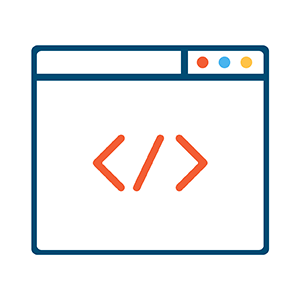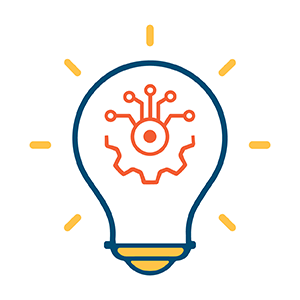Understanding the differences between DevOps and MLOps
- Edwin Kuss
- 4 min
The landscape of software and AI development continues to evolve rapidly, giving rise to new methodologies that redefine how teams build, deploy, and manage applications. Among these, DevOps and MLOps have become two of the most transformative practices. Both aim to streamline workflows, improve collaboration, and accelerate delivery, but they operate in very different worlds.
DevOps focuses on optimizing the development and deployment of traditional software systems, ensuring smooth collaboration between developers and operations teams. In contrast, MLOps extends these principles to machine learning (ML) — addressing the added complexity of managing data pipelines, model training, versioning, monitoring, and automation.
As machine learning adoption grows across industries, understanding the differences between MLOps and DevOps has become essential for organizations striving to scale their AI initiatives effectively. In this article, we’ll explore the key differences between DevOps and MLOps, their shared foundations, and how modern MLOps platforms like Kiroframe help bridge the gap between data science and production environments.
Defining DevOps

DevOps is a set of practices, cultural philosophies, and tools that bridge the gap between software development and IT operations. Its primary goal is to streamline the entire software development lifecycle — from coding and testing to deployment and monitoring — through automation, collaboration, and continuous feedback.
By breaking down silos between developers, testers, and operations teams, DevOps promotes a shared responsibility for product quality and delivery speed. The approach emphasizes shorter development cycles, faster time-to-market, and reliable releases that align with business objectives.
Key elements of DevOps
Continuous Integration (CI):
The process of merging code changes into a shared repository occurs multiple times a day. Frequent integrations enable early detection of bugs, reduce merge conflicts, and provide faster feedback loops for developers.
Continuous Delivery (CD):
Automates the software release process, ensuring that updates, new features, and patches can be deployed safely and consistently to production environments with minimal manual effort.
Infrastructure as Code (IaC):
Manages and provisions infrastructure through machine-readable definition files (e.g., Terraform, Ansible). This principle increases scalability, reduces human error, and ensures environment consistency across development, staging, and production.
Monitoring and Logging:
Tracks application health, performance metrics, and user activity to quickly identify and resolve issues. Continuous monitoring helps improve reliability and supports a proactive approach to incident management.
Collaboration and Culture:
A strong DevOps culture is built on transparency, shared accountability, and continuous learning. It encourages teams to view failures as learning opportunities, promoting innovation and resilience.
DevOps lays the foundation for automation, observability, and cross-team collaboration — the same principles that MLOps builds upon to manage the added complexity of data, models, and machine learning workflows, which will be discussed below.

Defining MLOps
MLOps (Machine Learning Operations) is an engineering practice that unites the principles of DevOps, data engineering, and machine learning to streamline the entire ML lifecycle — from data preparation and model training to deployment and continuous monitoring.
While DevOps focuses on automating and optimizing traditional software development, MLOps extends those ideas to handle the unique challenges of ML projects, such as managing large datasets, versioning models, monitoring data drift, and retraining models as data evolves.
By bridging the gap between data scientists, ML engineers, and IT operations, MLOps ensures that machine learning models can be built, deployed, and maintained reliably at scale. It introduces structure and repeatability to what was once an ad hoc process — transforming experiments into production-ready, continuously improving AI systems.
Key elements of MLOps
- Data Management: Ensuring proper storage, access, and versioning of the data used to train and evaluate ML models.
- Model Training and Experimentation: Facilitating the reproducibility of ML experiments by tracking hyperparameters, model architecture, and training data.
- Model Deployment: Automating the process of deploying ML models to production environments, including model versioning and rollback capabilities.
- Model Monitoring and Maintenance: Continuously monitoring model performance, detecting and addressing concept drift, and updating models as necessary.
Data Management:
Establishes consistent practices for collecting, storing, accessing, and versioning datasets used to train, validate, and test ML models. Proper data management ensures reproducibility, fairness, and compliance with data governance standards.
Model Training and Experimentation:
Enables teams to track experiments, tune hyperparameters, record model architectures, and compare performance across runs. MLOps platforms, such as Kiroframe, make this process efficient by offering experiment tracking, dataset management, and model profiling to ensure transparency and repeatability.
Model Deployment:
Automates the deployment of machine learning models into production environments — whether on-premises, in the cloud, or at the edge. This process encompasses version control, rollback options, and integration with CI/CD pipelines, enabling rapid and reliable releases.
Model Monitoring and Maintenance:
Continuously monitors production models to detect data drift, concept drift, or performance degradation. Automated retraining pipelines and alert systems help maintain accuracy and ensure that models adapt to changing real-world conditions.
MLOps empowers organizations to operationalize their AI strategies, reduce time-to-market, and maintain high-quality models at scale, making it a cornerstone of modern AI-driven development.

Comparing DevOps and MLOps: Key features and functions
While DevOps and MLOps share a common goal — faster, more reliable delivery — they operate in distinct domains. DevOps focuses on software lifecycle automation, while MLOps extends these practices to handle data, models, and continuous learning systems.
Below is a breakdown of the main differences between the two approaches:
Aspect | DevOps | MLOps |
Primary Focus | Automating the software development and deployment lifecycle. | Streamlining the end-to-end lifecycle of machine learning models — from data preparation to monitoring. |
Data Management | Deals mainly with code and infrastructure; data is usually static. | Places a strong emphasis on data quality, versioning, validation, and preprocessing, since model accuracy depends on input data. |
Experimentation and Reproducibility | Focuses on code and environment reproducibility for consistent builds. | Involves tracking experiments, hyperparameters, model versions, and datasets to ensure reproducibility across ML experiments. |
Deployment Complexity | Deploys software applications with predictable behavior and stable release cycles. | Handles model versioning, retraining, and automated rollbacks, ensuring seamless integration with evolving data pipelines. |
Monitoring and Maintenance | Monitors application uptime, performance metrics, and system logs. | Continuously monitors model performance, detects data drift or concept drift, and triggers retraining when accuracy declines. |
Collaboration Scope | Promotes collaboration between developers and operations teams to improve delivery speed and reliability. | Expands collaboration to include data scientists, ML engineers, and operations teams, aligning model performance with business objectives. |
Tooling and Automation | CI/CD pipelines, infrastructure as code (IaC), and configuration management tools. | Incorporates ML-specific automation — model tracking, dataset versioning, and automated retraining pipelines. |
Output | Deploys and maintains stable software releases. | Delivers adaptive, continuously learning AI systems that evolve with new data. |
Final thoughts
While DevOps and MLOps share the same goal of improving collaboration and accelerating delivery, they operate in different domains — one focused on software systems, the other on machine learning pipelines. DevOps optimizes the process of moving code from development to production, while MLOps governs the entire ML lifecycle, encompassing data management, experiment tracking, deployment, and continuous monitoring.
In today’s AI-driven landscape, this distinction is more than technical — it’s strategic. Businesses that master both practices can develop reliable software and scalable AI systems that evolve in response to real-world data. Adopting MLOps doesn’t replace DevOps; it extends it, enabling teams to manage the added complexity of machine learning with the same speed and discipline that transformed software delivery.
Modern MLOps platforms like Kiroframe make this transition easier by uniting data, models, and automation in a single environment. They empower engineering and data science teams to track experiments, validate datasets, and monitor performance efficiently, turning ML initiatives into measurable and repeatable business outcomes.